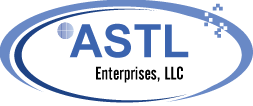
Richard B. Lewis
Principal Engineer & Managing Member
Professional Bio
Richard Lewis has worked in embedded systems since 1975, beginning with early microprocessors such as the Intel 8080, Motorola 6800, and Mostek 6502. He earned a BS in Computer Science/Mathematics from Angelo State University and pursued post-graduate studies in Mathematics at Stanford. Richard has led or contributed to projects for IBM, Dell, NCR, HP, Eaton, Qualcomm, NASA, and defense programs with the U.S. Navy, Air Force, and Army. Based in Austin, Texas since 1995, he continues to deliver hands-on engineering leadership across hardware, software, and testing — now integrating artificial intelligence into every stage of development, including design, diagnostics, documentation, optimization, and validation.
Corporate History Highlights
- 1975–1978: Founded Lewis & Associates while in college; early clients included Carrier Air Conditioning.
- 1979–1985: Software engineer at GTE, Ford Aerospace, and Loral Space; launched first consulting practice.
- 1985–1998: Founded Deltasoft Corporation; created STAR*RPS remittance software, widely adopted in banking.
- 1990–1998: Expanded into hardware with Group ASTL, Inc., serving national banking clients.
- 1999–Present: Continued consulting under ASTL Systems, delivering embedded solutions to enterprise and defense.
The Future
ASTL builds on decades of embedded experience with today’s cutting-edge tools, including artificial intelligence, to accelerate development and testing. We look forward to partnering with clients who demand precision, innovation, and reliability in their engineering projects.
 ASTL Enterprises, LLC
ASTL Enterprises, LLC